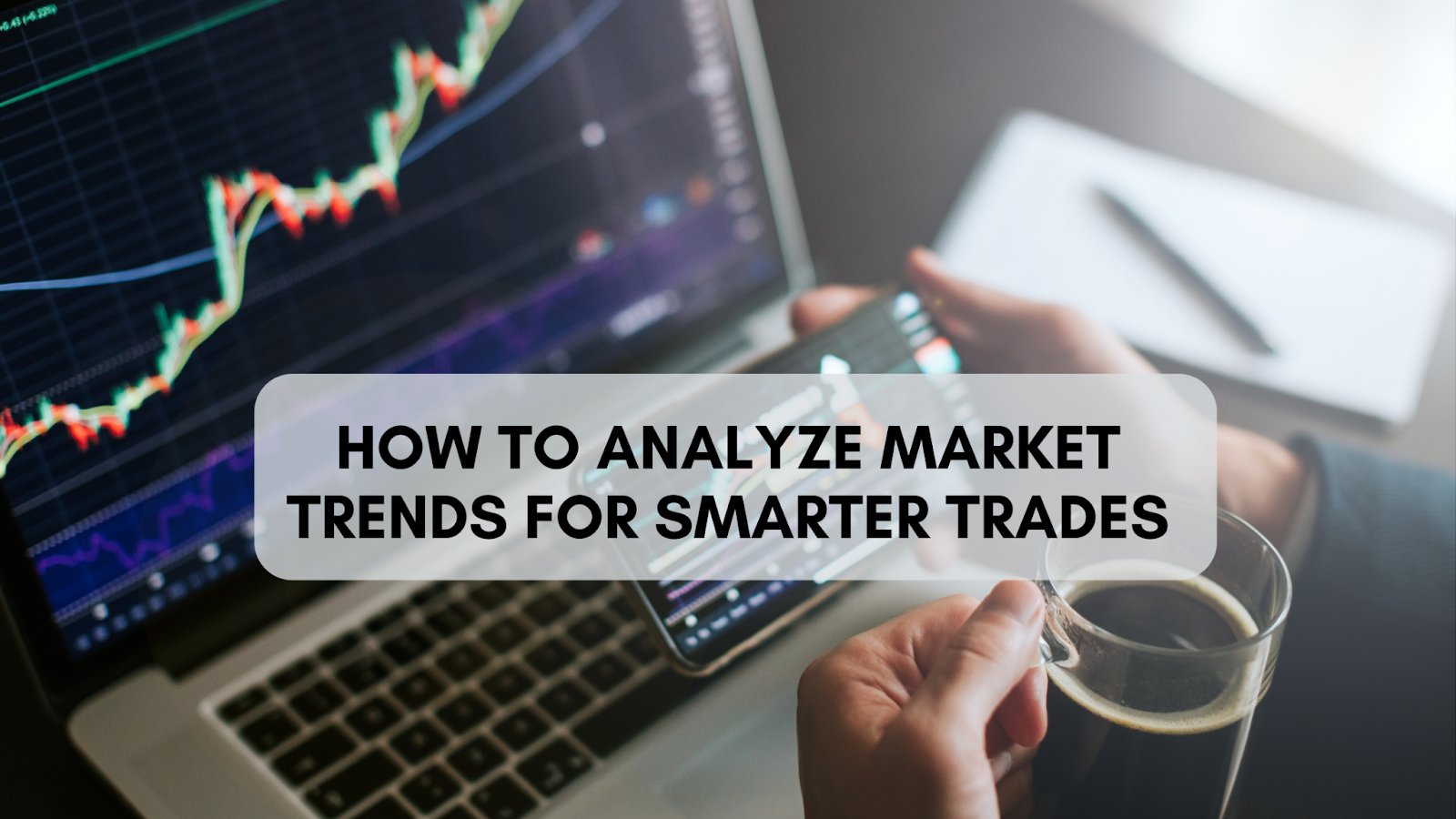Staying ahead of the curve in trading can be the difference between a successful strategy and missed opportunities. Understanding market trends involves more than just following the latest news or reacting to price movements; it’s about mastering the art of anticipating shifts before they happen.
Analyzing involves leveraging detailed reports on trades by industry sectors. These reports help traders understand market dynamics and refine their strategies. If you’ve ever wondered how top traders know the perfect moment to buy or sell, the secret often lies in their ability to analyze market trends effectively.
In this blog, we’ll dive into how you can harness the power of trend analysis to make smarter and more informed trades. Whether you’re a seasoned trader or just starting, these insights will help refine your approach and enhance your trading strategy.
Why Understanding Market Trends Matters?
Analyzing market trends is crucial because it helps traders identify the overall market direction, enabling them to make informed decisions about entry and exit points. Understanding trends helps traders capitalize on market momentum and anticipate potential reversals, thereby reducing the risk of losses.
Additionally, trend analysis combines technical indicators, fundamental data, and market sentiment. It provides a comprehensive view that enhances decision-making and strategy alignment. Ultimately, effective trend analysis improves trading accuracy and helps manage risk, leading to greater long-term success.
Importance of AI in Stock Trading
Artificial Intelligence (AI) is revolutionizing stock trading by offering advanced analytics and predictive insights that significantly enhance trading strategies. While human traders can efficiently analyze market information, AI algorithms can process vast amounts of data at lightning speeds. This capability enables precise market predictions and automated decision-making. It reduces emotional biases and human errors. By integrating AI for stock trading, traders can make better decisions based on real-time data. It helps them develop highly optimized strategies and manage risks more effectively.
Advanced Trend Analysis Techniques
Technical indicators are essential tools for market trend analysis. Moving Averages, such as the Simple Moving Average and Exponential Moving Average, smooth out prices to help identify trends. Of these two, EMA places greater emphasis on the most recent prices to reflect quicker responsiveness. The Relative Strength Index estimates the strength of a trend and potential turning points. It indicates overbought conditions when the reading is above 70 and oversold conditions when it’s below 30.
The MACD is an indicator that uses the relationship between two moving averages to show a change in momentum and trend direction. Some chart patterns are indicative of future movements in the market and reversals of trends. Lastly, Volume Analysis examines trade volumes alongside price fluctuations to confirm trends and identify potential reversals. The On-Balance Volume (OBV) assesses the trend strength through the addition of volume on days when the trend goes up and subtracting it when the trend goes down.
Incorporating Fundamental Analysis
Indicators like GDP, unemployment rates, and inflation data significantly influence market trends and trading decisions. Central bank policies on interest rates and monetary adjustments shape market sentiment. This enables traders to predict how markets will react.
At the company level, factors such as earnings reports and revenue growth are crucial for assessing a company’s financial health and its impact on stock price. Assessing a company’s competitive positioning within its industry can provide insights into its long-term performance based on growth prospects and market standing.
Utilizing Sentiment Analysis
Market sentiment tools, such as the Fear & Greed Index, use volatility and other market variables to quantify investor mood. Social media and news sentiment tools give an overview of real-time investor behavior and market trends by analyzing large volumes of data. Behavioral finance highlights common psychological biases, including herd behavior and overconfidence, that can affect decision-making. Studies reveal how these biases influence market fluctuations. Understanding these biases helps traders make more objective decisions and refine their strategies.
Integrating Trend Analysis into Trading Strategies
Developing a trend-based trading plan involves creating a comprehensive strategy. It incorporates all knowledge about trend, fundamentals, and sentiment analysis. Define the entry and exit points in detail according to your trend forecast. Establish rules for risk management to protect your investments. Effective risk management involves placing stop-loss orders and determining position sizes based on risk tolerance to avoid unexpected losses.
Backtesting your strategy with historical data helps validate its effectiveness and make necessary adjustments. A strategy should be in continuous refinement based on changes in market conditions. It maintains the effectiveness and agility of your approach over time.
Tools and Resources for Trend Analysis
When it comes to selecting any trading platform, go for the popular ones. They have advanced trend analytics with technical analysis tools, charting, and data visualization capabilities. To deepen your knowledge, consider advanced courses, webinars, and books on market trend analysis.
This will greatly benefit you in terms of ideas and tips. Moreover, in trading communities and forums, you can share your strategies and insights and get the latest updates on any market trend to learn from others about their experiences in such situations.
Conclusion
Analyzing market trends requires a multi-faceted approach. By integrating these methods into a structured trading strategy, you can make smarter and more informed trading decisions. Remember, mastering market trends is a continuous journey that demands ongoing learning and adaptation. To stay ahead in the competitive trading landscape, use these techniques and tools to refine your strategies.
Ready to transform your strategy? Apply these techniques today and watch your trading skills improve. Don’t miss out!
Also Read: How Funded Trader Programs Are Changing the Trading Landscape
Frequently Asked Questions (FAQs)
- What is the role of sentiment analysis in trading?
Sentiment analysis assesses market mood and investor behavior through tools like the Fear & Greed Index and social media sentiment. By understanding market sentiment, a trader can tell if investors are in an optimistic or pessimistic mood, which eventually affects price movement and possible trends.
- What is the importance of volume analysis in trend forecasting?
Volume analysis confirms and finds reversals in trends by analyzing the number of shares or contracts traded. It confirms trends, if there is high volume while on an uptrend, and low volume while on a downtrend, it would mean that the momentum of such a trend is weakening.
- How often should I update my trend analysis?
Trend analysis is updated at regular periods, depending on your trading style and time frame of focus. A day trader updates their analysis throughout the day, while a swing trader might review their analysis daily or weekly. Regular updates ensure that your strategy aligns with current conditions and adapts to emerging needs.



